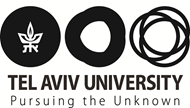The Chana and Heinrich Manderman Chair in Optoelectronics
Incumbent: Prof. Shlomo Ruschin
2011-2013 Activity
General: The research activity of the Chana and Heinrich Manderman Chair in Optoelectronics comprises diverse aspects in the fields of Electro-Optical devices and Lasers. It includes fundamental studies and applications directed mainly toward sensing and telecommunication based on electro-optical devices. Specifically the following topics were investigated during the 2011-2012 period:
- Optical Environmental Sensors
The field of environmental sensors is one of the fastest growing both in research and commercial fields. Most of the research work in this area is concentrated towards reducing the size of sensors and identification and quantification of multiple species. Quick response, minimum hardware requirement, good reversibility, sensitivity, and selectivity are expected from an excellent sensor, and hence there is a need for further research. The applications of chemical sensors include quality and process control, biomedical analysis, medical diagnostics, environmental pollution control, continuous and long term monitoring of pollutants and hazardous substances.
We report optical sensing devices using porous silicon as test bed. They are based on signal or statistical analyses of the data acquired and take advantage of the possibility of multi-sensing with properly modified sensor arrays. Water and ammonia vapors detection and discrimination was chosen as a test case since their presence affect in an interrelated way the reaction of the indicator. Several new configurations for optical multi-sensing were presented [1-2] and demonstrated. The methods are based on chemical reaction between ammonia-sensitive dye and the detected molecules. These reactions are accompanied by changes of optical absorption spectrum within the VIS-NIR range. The methods are however generic for optical remote sensing of multiple gas components and can be applied to industrial and environmental gas supervision as well as biomedical applications
. In another work [3] we presented a method to resolve the phase-ambiguity problem in interferometer sensors. The proposed method is based on operating a wavelength-interrogated two-wave interferometric sensor close to the critical sensitivity point. We show that in this vicinity, changes in the transmission spectrum take place at two sensitivity scales. One of them is highly sensitive and periodic while the other scale has low sensitivity but is monotonic and quasi-linear and serves for recording the phase periods. The dynamic range of the sensor can thus be increased by 1–2 orders of magnitude as compared to ordinary unbalanced interferometric sensors. The method thus avoids the need for the continuous tracking of data while sensing - Advanced optical communication formats
Advanced modulation schemes, such as M-ary quadrature amplitude modulation (QAM) can provide solutions to high speed transmission systems. QAM is a modulation scheme that conveys data by means of modulating both the amplitude and the phase of a sinusoid carrier, thus providing spectral efficiencies exceeding 2 bits/symbol. We developed a simple method for generating arbitrary M-ary constellations by introducing the concept of direct digital driving [4], which facilitates the use of only two voltage levels for controlling each of the electrodes. Furthermore, the modulator is composed of a single multi-electrode MZM. It was further shown [5] that two mutually uncoupled micro-resonators in series can adequately cover the entire I-Q space and render the realization of QAM signals possible. This approach is based on the independent optimization of each micro-resonator for amplitude and phase modulation respectively. Generation of 16 quadrature amplitude modulation was demonstrated by means of simulation. - Spatial and Mode-Division Multiplexing
Involving the spatial dimension seems one of the mainstream and promising directions for a substantial increase in the capacity of optical communication channels, by transmitting several data channels through a single data link. Angular multiplexing and mode-division multiplexing (MDM) are some of the recently discussed options for space-division multiplexing (SDM). In particular, the multimode (MM) free-space optical schemes resorting to orbital angular momentum were demonstrated. However, the two-dimensional (2D) nature of light modes suggests more degrees of freedom for SDM. In particular, Laguerre– Gaussian (LG) modes with different radial orders p and angular momentum orders l are good candidates for SDM, as they are able to propagate both in free space and graded index fibers. In our work [6-8] , by resorting to the DOEs, we built a prototype optical correlator system for spatial multiplexing and demultiplexing of low-frequency temporal signals carried by modal powers. The transmitted and received signals in different mode channels were monitored in real time to provide throughput and cross-talk figures. Results of optical measurements and detailed computer simulations proved the feasibility of MDM with radial symmetrical LG modes. - New method for the characterization of laser beams
The issue of characterizing the beam quality of a coherent beam has been a matter of study and discussion for more than two decades Although several ways to characterize and evaluate the quality of coherent beams have been proposed, there is a widespread consensus that there is no single accepted beam quality parameter suitable for all applications and scenarios, and, therefore, specific quality factors are often chosen by practical considerations and even “target-oriented”. In this research [9], an additional alternative definition of a beam quality factor was proposed. It defines in some sense the “best closeness” of a given beam to a standard Gaussian distribution, and it is suited to applications where the coherence properties of light are the target of preference. Examples of such applications are the coherent combination of different laser sources and the optimal coupling from a laser to a single-mode optical fiber.

